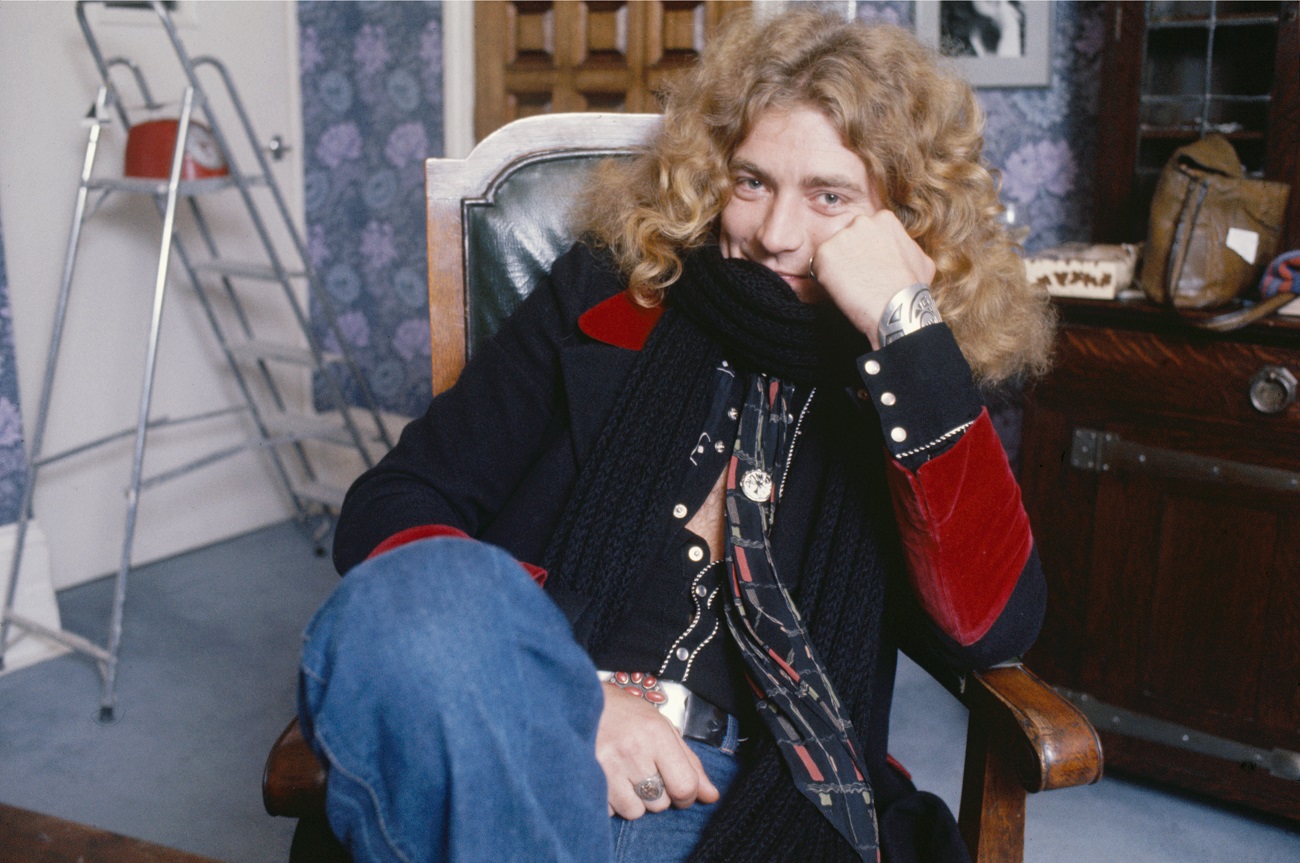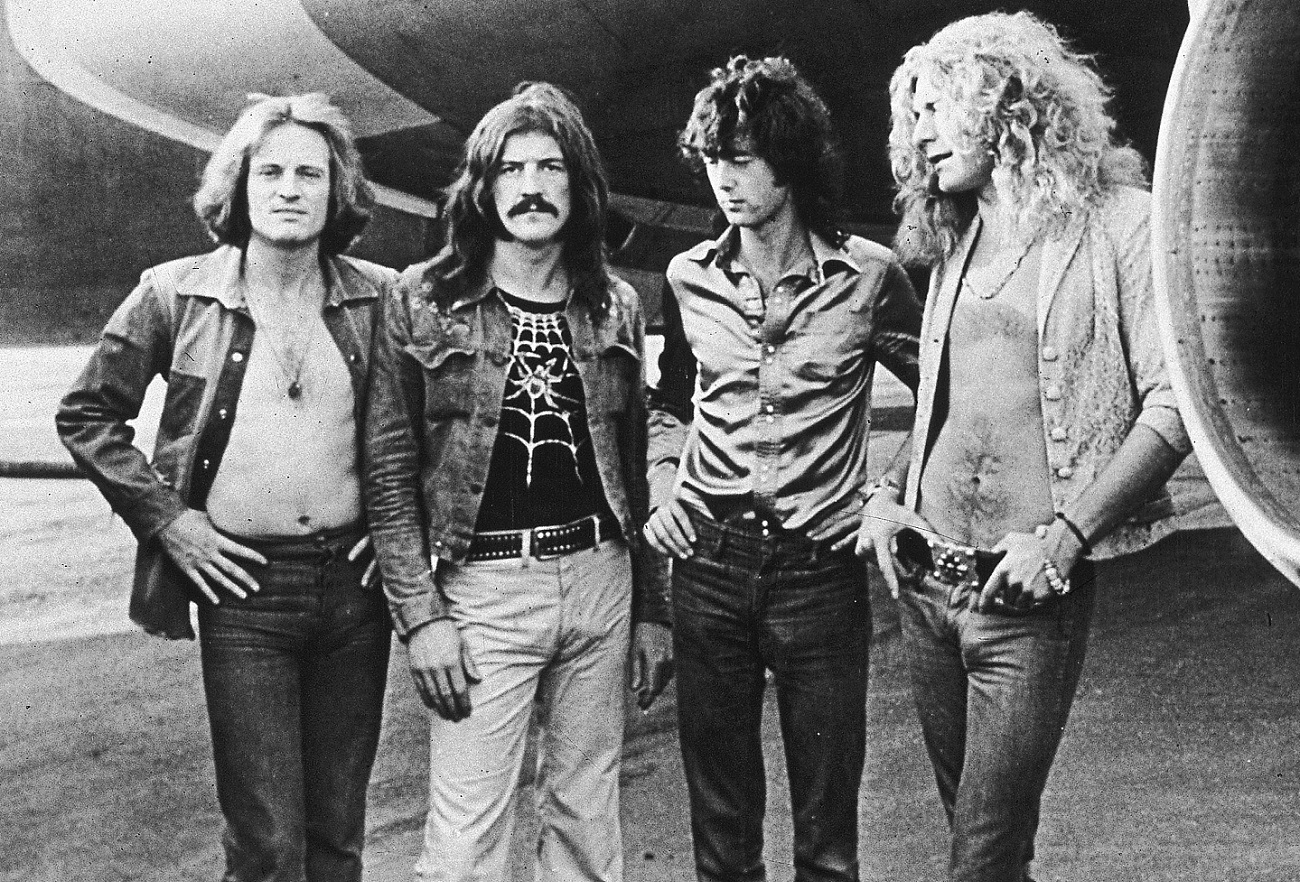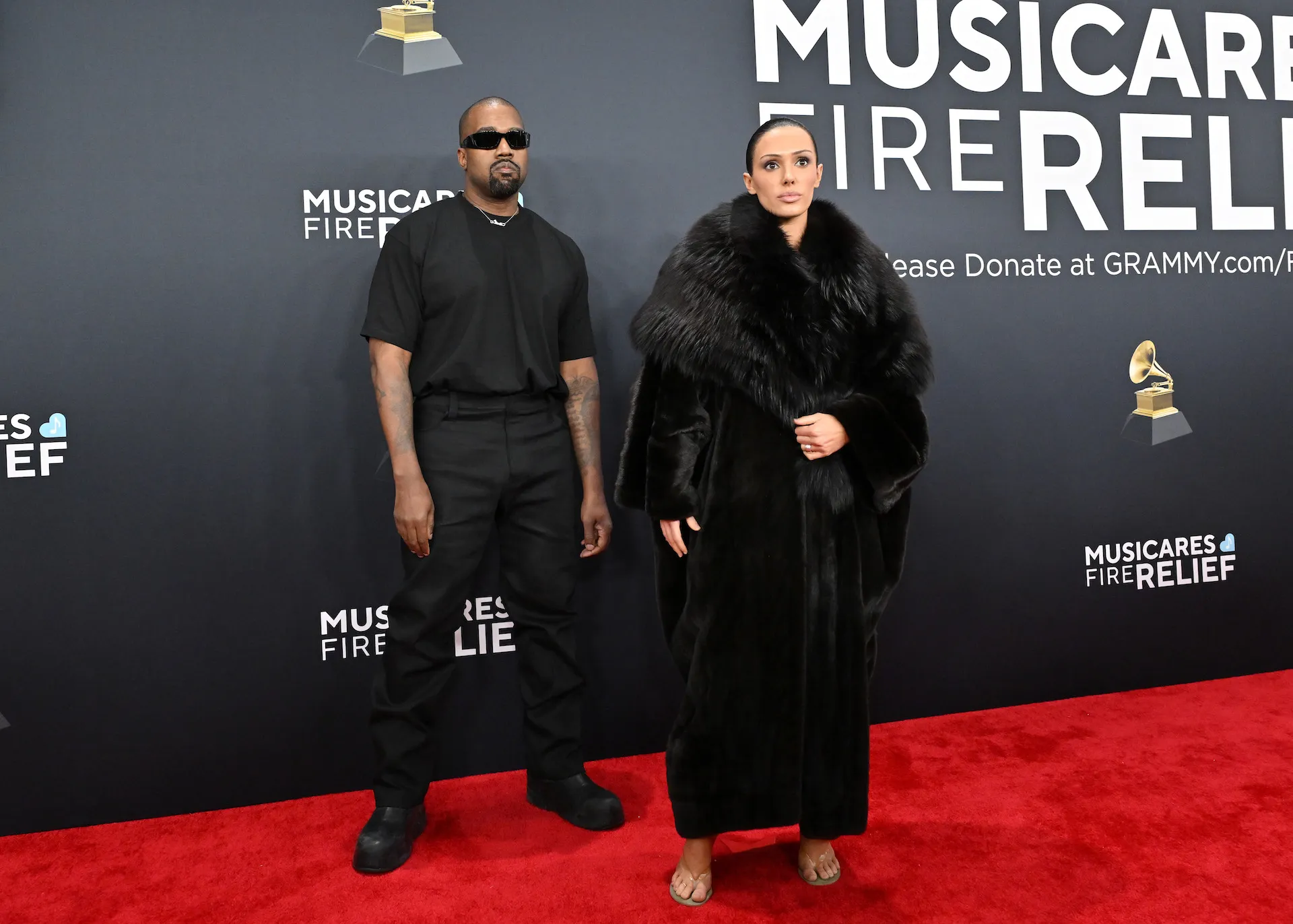The Only Led Zeppelin Album That Came With a Full Lyric Sheet
While song lyrics might not be the first thing that comes to mind with Led Zeppelin, lead singer Robert Plant did some fine work during his time with the band. Plant was always improving. It’s a long way from his early effort “Thank You” (1969) to “The Battle of Evermore” (1971) two albums later.
In a ’70s interview reprinted in Led Zeppelin in Their Own Words, Plant spoke a bit about his ambitions as a writer. “I spend so much time trying to perfect lyrics that I’d really like to have a book beautifully bound of my really beautiful words,” he said.
As far as I’m aware, Plant never got that book, but he did get to see his lyrics printed out on Zeppelin albums. The first time came when the band included the lyrics to “Stairway to Heaven” on the inner sleeve of Zep’s untitled fourth LP (aka Led Zeppelin IV). Two years later, all of Plant’s lyrics went out on the sleeve of the group’s fifth album.
Led Zeppelin printed all the ‘Houses of the Holy’ lyrics on the inner sleeve

For Led Zeppelin’s fourth album, the band did something different. Instead of having the group’s name or a title on the record, the front and back cover (as well as the gatefold) featured standalone art. Inside, you couldn’t even find the names of the band’s four members. (There were four symbols instead.) Then you got the lyrics to “Stairway” on the inner sleeve.
The Zep more or less followed that pattern on Houses of the Holy (1973). Once again, the front and back covers had no mention of the band’s name or the LP title; neither did the equally dramatic gatefold art. But on the inside the Zep had a surprise for fans.
Along with the album title and personnel on each track (i.e., which band member played what), fans got the lyrics to all eight tracks printed in black on the white inner sleeve. Everything from “Oh oh oh oh oh oh / You don’t have to go” (“D’Yer Mak’er“) to Plant’s strong work on “Over the Hills and Far Away” turned up there.
Zeppelin returned to the bare-bones approach on ‘Physical Graffiti’

Outside of a single paragraph mentioning Bron-Yr-Aur on the gatefold of Led Zeppelin III (1970), there never was anything representing editorial whimsy on a Zep album. In fact, the only other line worth mentioning is “Whatever happened to Rosie and the Originals?” on the Houses of the Holy lyric sleeve (below the “D’Yer Mak’er” lyrics).
When the band released Physical Graffiti (1975) on its own Swan Song label, fans got another great sleeve and the old bare-bones approach when it came to information (i.e., no lyrics, no comments). And the same went for Presence (1976) and In Through the Out Door (1979).
Led Zeppelin wanted the focus to be on the music, and that was almost always the case. The exception was The Song Remains the Same, the concert film that featured fantasy sequences and documentary footage mixed in between performances. And that didn’t go at all as planned.


